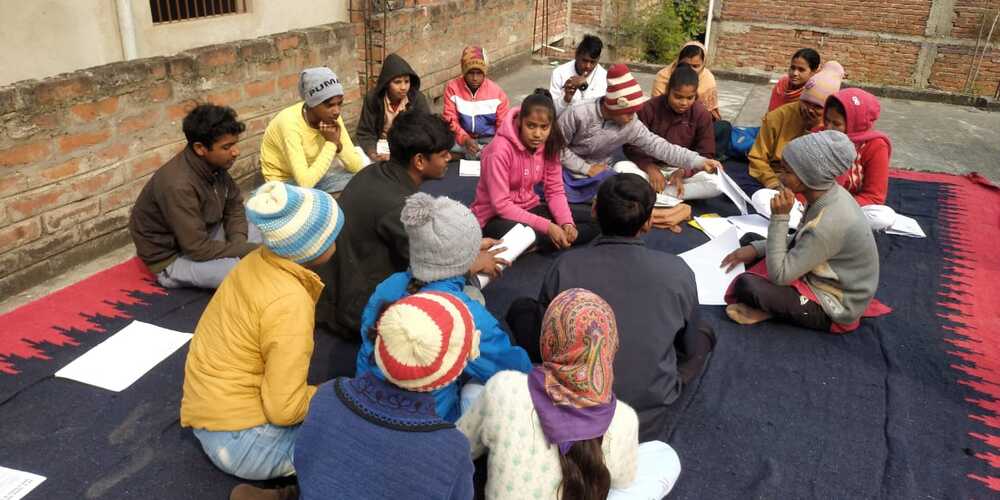17 steps to combat obesity and diabetes: ICMR-NIN
Author
Author
- admin / 1 year

- 0
- 4 min read

Author
Intake of cereals should be limited to 45 per cent of the total energy, while for pulses, eggs, and flesh foods, the total energy proportion should be around 14-15 per cent.
The Indian Council of Medical Research-National Institute of Nutrition (ICMR-NIN) — the country’s apex nutrition authority — recently updated its dietary guidelines for Indians. The guidelines, released this month after a 13-year hiatus, recommend 17 steps to meet the requirements of a balanced diet and to prevent non-communicable diseases (NCDs) like obesity and diabetes.
From “read information on food labels” to “minimise the consumption of ultra-processed foods and high-fat, high-sugar, high-salt foods” and “limit sugar intake to just five per cent of daily caloric intake”, the dietary guidelines aim to facilitate optimal nutrition for all Indians.
In India, 56.4 percent of the disease burden is directly linked to unhealthy diet, as per ICMR-NIN. “Healthy diets and physical activity can reduce a substantial proportion of coronary heart disease and hypertension and prevent up to 80 per cent of type 2 diabetes. A significant proportion of premature deaths can be averted by following a healthy lifestyle,” the 148-page document noted.
In India, the ICMR notes, severe forms of undernutrition such as marasmus, kwashiorkor, and keratomalacia have largely disappeared, yet subclinical manifestations of undernutrition and anemia persist as public health issues. A significant proportion of children suffer from impaired nutritional status. Concurrently, there is a rising prevalence of overweight and obesity in several states, creating a dual burden of malnutrition where both undernutrition and overweight/obesity coexist within the same communities.
Data from the Comprehensive National Nutrition Survey 2019 (CNNS) highlights that a substantial number of children exhibit early indications of NCDs and their related risk factors like diabetes and hypertension. The presence of altered metabolic biomarkers in over half of the undernourished and normal-weight children and adolescents raises significant public health concerns.
The upsurge in the consumption of highly processed foods laden with sugars and fats, coupled with reduced physical activity and limited access to diverse foods, exacerbates micronutrient deficiencies and the overweight/obesity problems, according to the ICMR. Research indicates that unhealthy, highly processed, high-fat, high-sugar, and high-salt foods have become more affordable and accessible than healthier alternatives. Aggressive advertising and marketing of these unhealthy foods through different media channels, including social media, are seen to influence dietary preferences among both children and adults.
The ICMR-NIN’s ‘My Plate for the Day’ recommends sourcing macronutrients and micronutrients from a minimum of eight food groups, with vegetables, fruits, leafy vegetables, roots, and tubers forming essentially half of the plate of recommended foods per day. The other major portion is occupied by cereals and millets, followed by pulses, flesh foods, eggs, nuts, oilseeds, and milk/curd. Intake of cereals should be limited to 45 per cent of the total energy, while for pulses, eggs, and flesh foods, the total energy proportion should be around 14-15 per cent; total fat intake should be less than or equal to 30 per cent energy, while nuts, oilseeds, milk, and milk products should contribute to 8-10 per cent of total energy per day, respectively.
However, in a large segment of the country’s population, the intake of micronutrient-dense foods (whole grains, pulses, beans, nuts, fresh vegetables, fruits, etc) is found to be lower than the recommended levels, whereas the intake of refined cereals is found to be higher. As per the data, cereals contribute to 50-70 per cent of total energy per day. Pulses, meat, poultry, and fish together contribute to six-nine per cent of the total energy per day, as against the recommended intake level of 14 per cent of total energy from these foods.
Low intake of essential nutrients can disrupt metabolism and increase the risk of insulin resistance and associated disorders from a young age. The most logical, sustainable, and long-term solution to all forms of malnutrition is ensuring the availability, accessibility, and affordability of nutrient-rich food, while promoting the consumption of diverse foods from various food groups.









